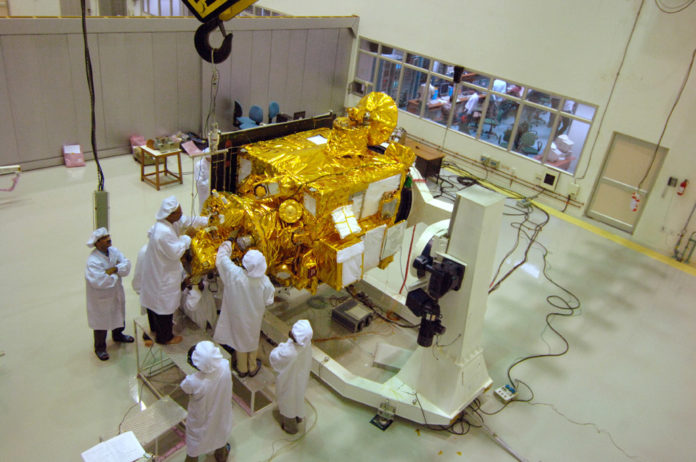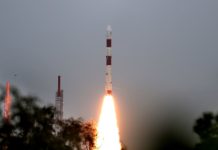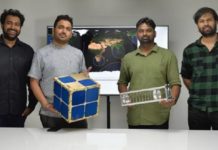Chandrayaan-1, the first lunar probe launched by the Indian Space Research Organisation (ISRO) in 2008, has been found after having lost contact with Earth on 29 August 2009.
Yesterday, NASA announced that the spacecraft was located by the Jet Propulsion Lab (JPL) by using a new interplanetary radar technique that measures echoing radar signatures from microwave beams sent to the moon, and then comparing the data with orbital predictions.
In the case of Chandrayaan-1, the radar team utilized NASA’s 70-meter antenna at the Goldstone Deep Space Communications Complex in California to send out a powerful beam of microwaves directed toward the Moon, and then measuring the radar echoes that bounced back using the Green Bank Telescope at West Virgina.
This enabled the team to detect a small object circling the moon. By then corroborating these findings with Chandrayaan-1’s predicted orbital path, the team was able to deduce that the object detected by the radar was, indeed, India’s lost spacecraft.
Although NASA’s interplanetary radar is not new, and has been used to detect small asteroids, JPL’s radar team was unsure that it could be used to detect an object as small as Chandrayaan-1 from such a great distance.
The Chandrayaan-1, India’s first lunar probe, was launched on 22 October 2008 and was intended to survey the lunar surface over a 2-year period. The vehicle carried five ISRO payloads and six from other space agencies such as NASA and ESA. After technical failures of the Chandrayaan-1’s star sensors and thermal shielding, the spacecraft stopped sending signals, leading ISRO to declare the mission over after 312 days.
Along with Chandrayaan-1, the radar test also detected NASA’s Lunar Reconnaissance Orbiter (LRO), a robotic spacecraft which, like Chandrayaan-1, is in polar orbit around the moon. The LRO, launched on June 18 2009, was NASA’s first mission to the moon in over 10 years, and has successfully collected an enormous amount of data that is now available to the public on its website.







